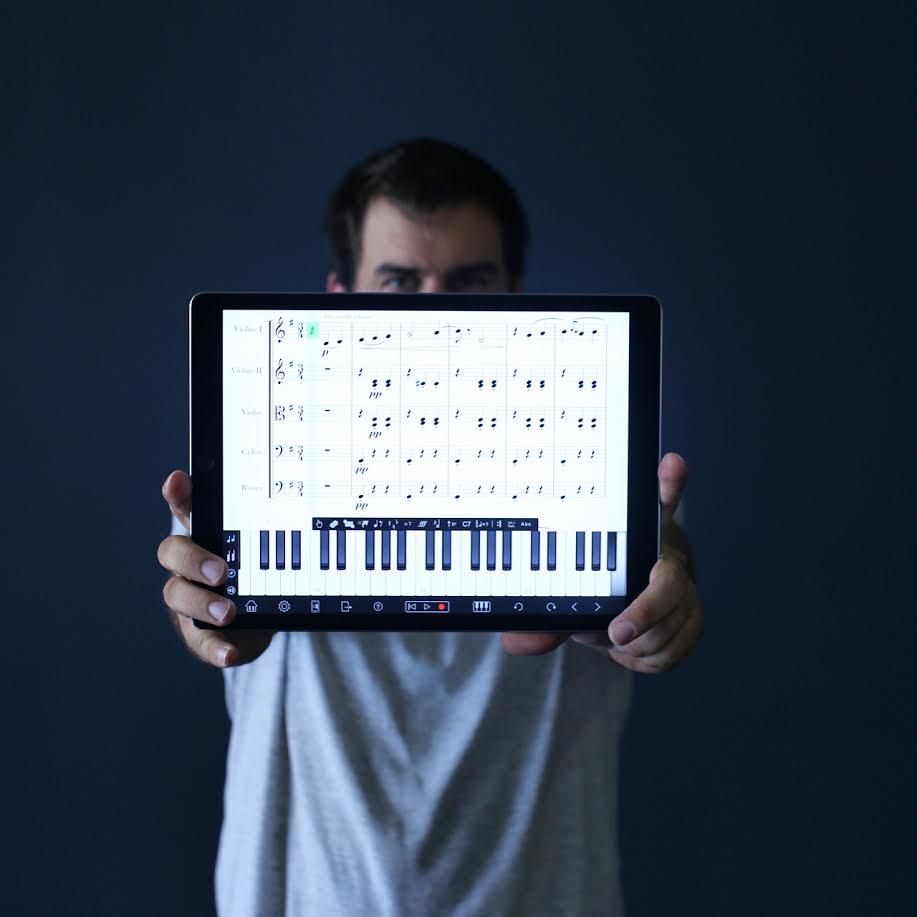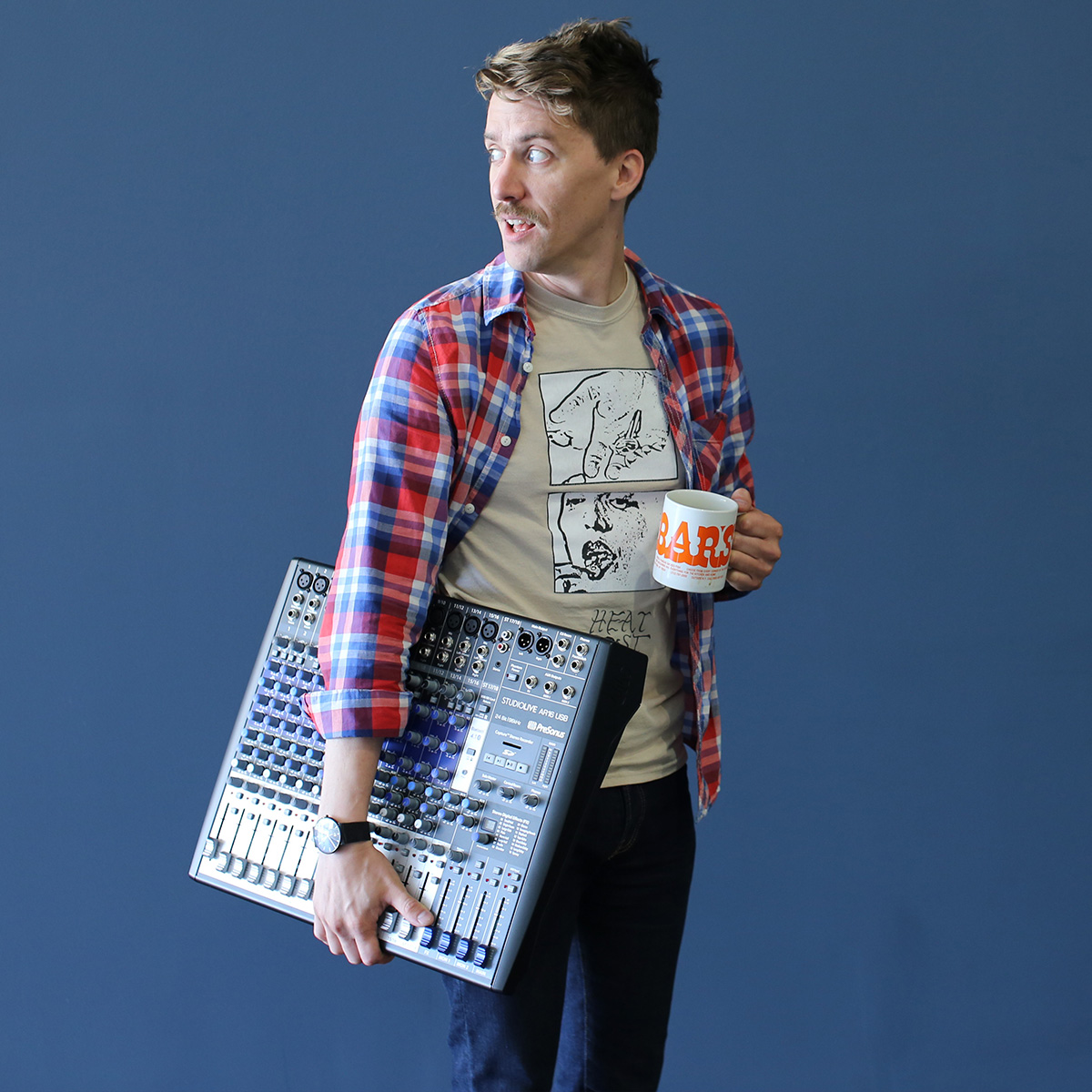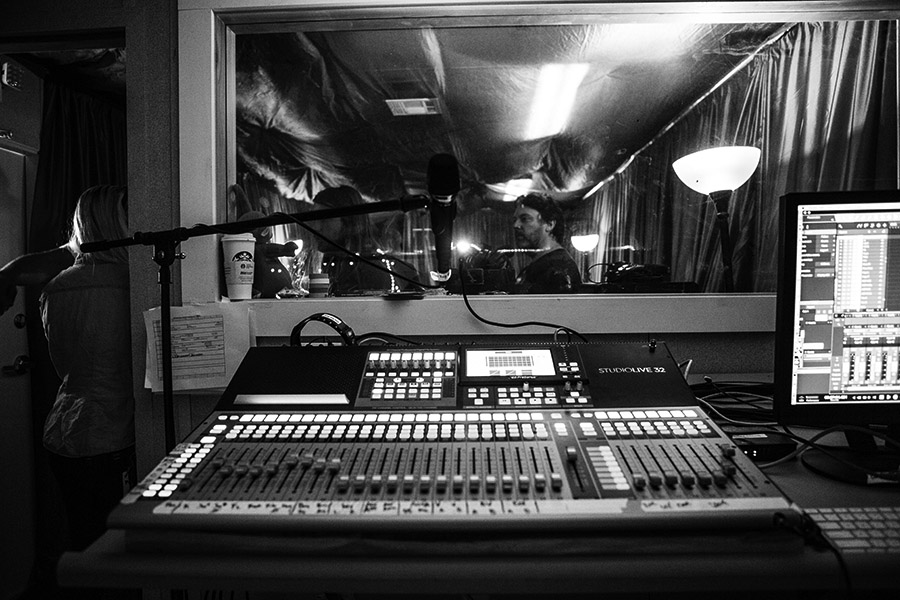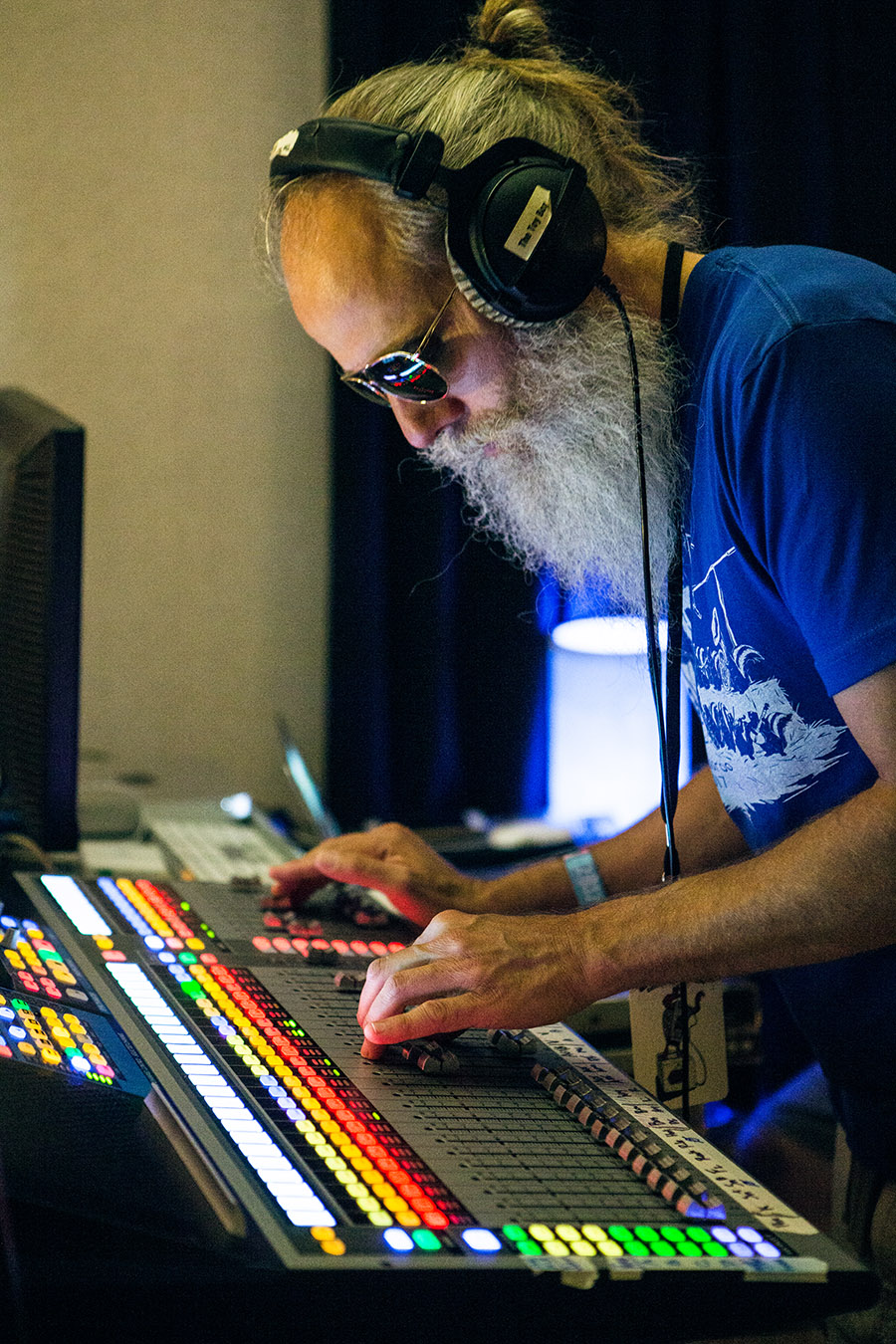It’s Ray Tantzen for #PreSonusFAMFriday

Four years and six months.
Knowing products that I’ve worked on help wonderful artists create and perform.
What was the first 8 track, cassette, CD, digital download you purchased?
Who’s your go to band or artist when you can’t decide on something to listen to?
Anything Chris Thile.
Dad, Husband, Church sound mixer, Beard mastering.
What do you love about the StudioLive Series III?
What’s NOT to love 😉 The workflow is awesome. It’s super easy to just jump on and use. I also love having the different EQ and compressor models available. It adds a whole new layer to the sound. And of course there’s the multitrack SD Card recording! There’s no need to mess with a computer to record. They’re all available now and shipping worldwide!
What other products do you have?

Why did you choose the Series III as your favorite?
I love having a mixer as the centerpiece of my home studio and the StudioLive 24 is a perfect fit. It has a smaller footprint than the 32 but still has the split-layer fader workflow and is still a full 32-channels under the hood. I have it connected to my Mac Mini via AVB to also use as an interface for recording. Plus is sounds incredible and I can take it out for live gigs when needed. I’m also really looking forward to the stage boxes and DAW control coming later. That will be the cherry on top!
AND it’s shipping as of this week!
Tell us about the coolest thing you’ve done with PreSonus.
I could tell you, but then I’d have to kill you 😉 What I can talk about is the upcoming stage box solutions and DAW control for the Series III mixers. After that, you’ll just have to wait and see!
Got any tips for working with the mixer?
Spend a little extra time before your show to setup custom layouts on the fader User layer and Fat Channel User layer. This will really help to put what you care about most right where you ant them for faster and easier mixing.
Connect with Ray on Social here:
It’s Micah Blouin for #PreSonusFAMFriday
Hopefully today’s #PreSonusFAMFriday feature will teach you a little something…
How long have you worked for PreSonus?
Five years. I started off in Product Management and then moved into Marketing Dept and then Sales and then Education…. Next thing you know, they’ll be asking me to mop the floors.
What was the first 8 track, cassette, CD, digital download you purchased?
What’s your side hustle?
I play drums in a band called Minos the Saint. Maybe you have heard of us… I also am the orchestra director at Istrouma Baptist Church, where I do some drumming, conducting, and arranging (using Notion). I also do a lot of work with soloists and groups in the area, whether it be side-man drumming, engineering, mixing, or producing.
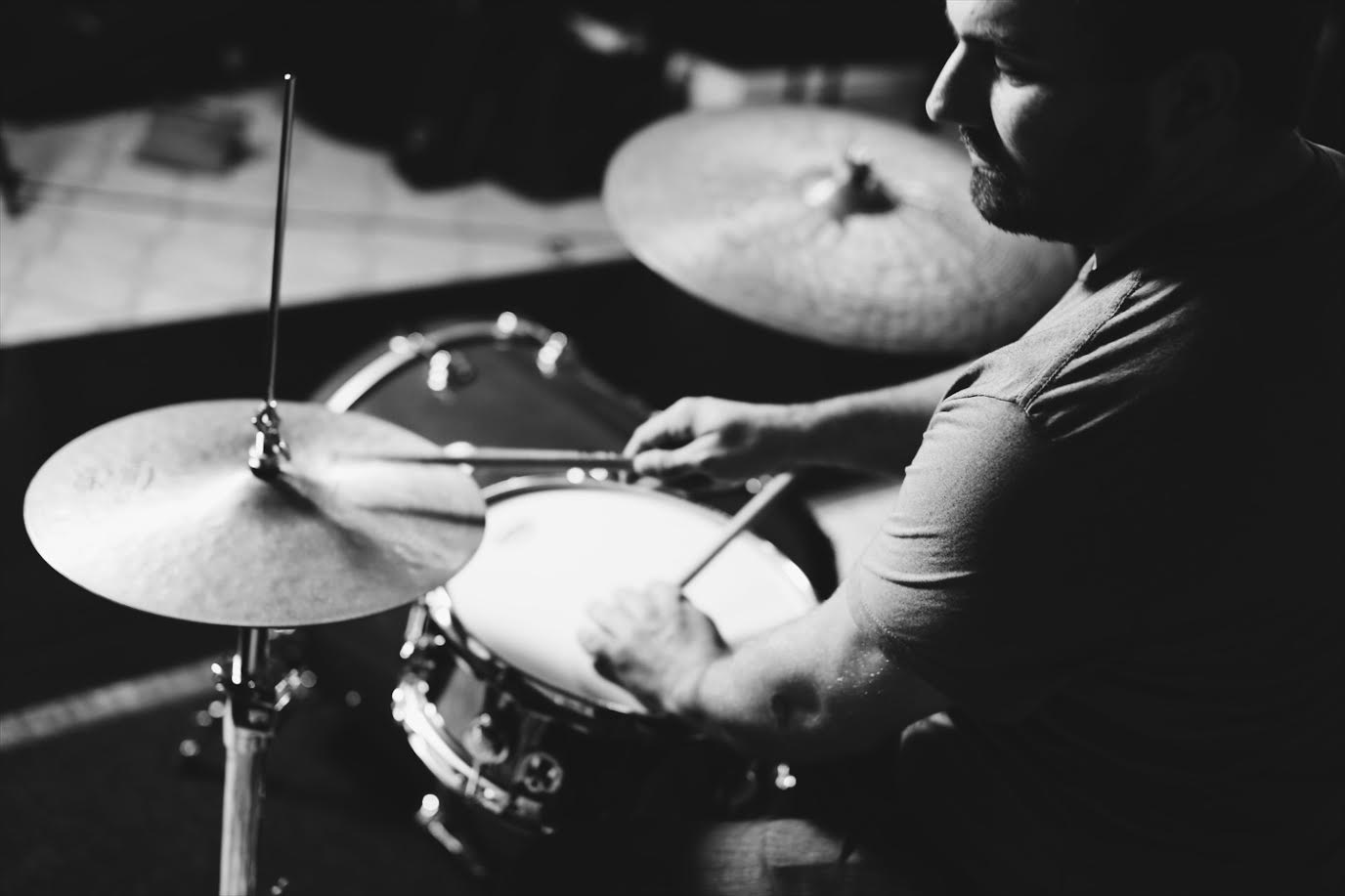
What other products do you have?
All of them…. haha. I use ADL700, ADL600, Studio One, RML32, Studio One remote, Central Station Plus, Temblor 10, Eris 5, Eris 8, Sceptre 8, FaderPort, Air 12.
Why did you choose Notion as your favorite?
As an educator, Notion is the easiest and most fun product to teach others. You can do so much with it and it helps your workflow—more on that later. I like sharing that with others.
Tell us about a successful event you worked.
I attend education conferences year-round and work one-on-one with teachers to find the best solution for their instructional, rehearsal and performance spaces.
What are you currently working on–What’s next for you?
In the summer, music educators and students are involved in many music camps, marching band activities, and Drum & Bugle Corps tours. PreSonus provides the on-the-field reinforcement for The Blue Devils, The Phantom Regiment, Spirit of Atlanta, and many other successful competitive programs. Marching groups these days have significantly more audio technology requirements, whether it be scenes, routing, or remote control. I’m working with them to ensure groups have an easy-to-use, powerful, and flexible solution that fits their needs.
Got some tips?
The power of Notion is in the simplicity of the workflow and the flexibility to use it across multiple devices. The graphic display appears very sleek, but it’s a very powerful notation program, with some surprisingly quick engraving tools. My first tip is to learn the keyboard shortcuts on a computer, which are super intuitive (q=quarter note, d=dot, <=crescendo, #=sharp). On a computer/laptop or iPad, I suggest the handwriting feature, which enables you to write directly on the score with a mouse, finger, stylus or the Apple Pencil.
Anything else you want to share?
Notion is tightly integrated with Studio One. Sometimes, the classical musician in me wants to compose in Notion, then send the score to Studio One (I simply click “Send to Studio One”), where I can then use Studio One to produce tracks around my score. Other times, I’d prefer to write a song on guitar and vocals, and then “Send to Notion” so I can write scoring around my song.
Notion is available at a discounted price for Studio One owners: $49 for Studio One Professional users and $99 for Studio One Artist users.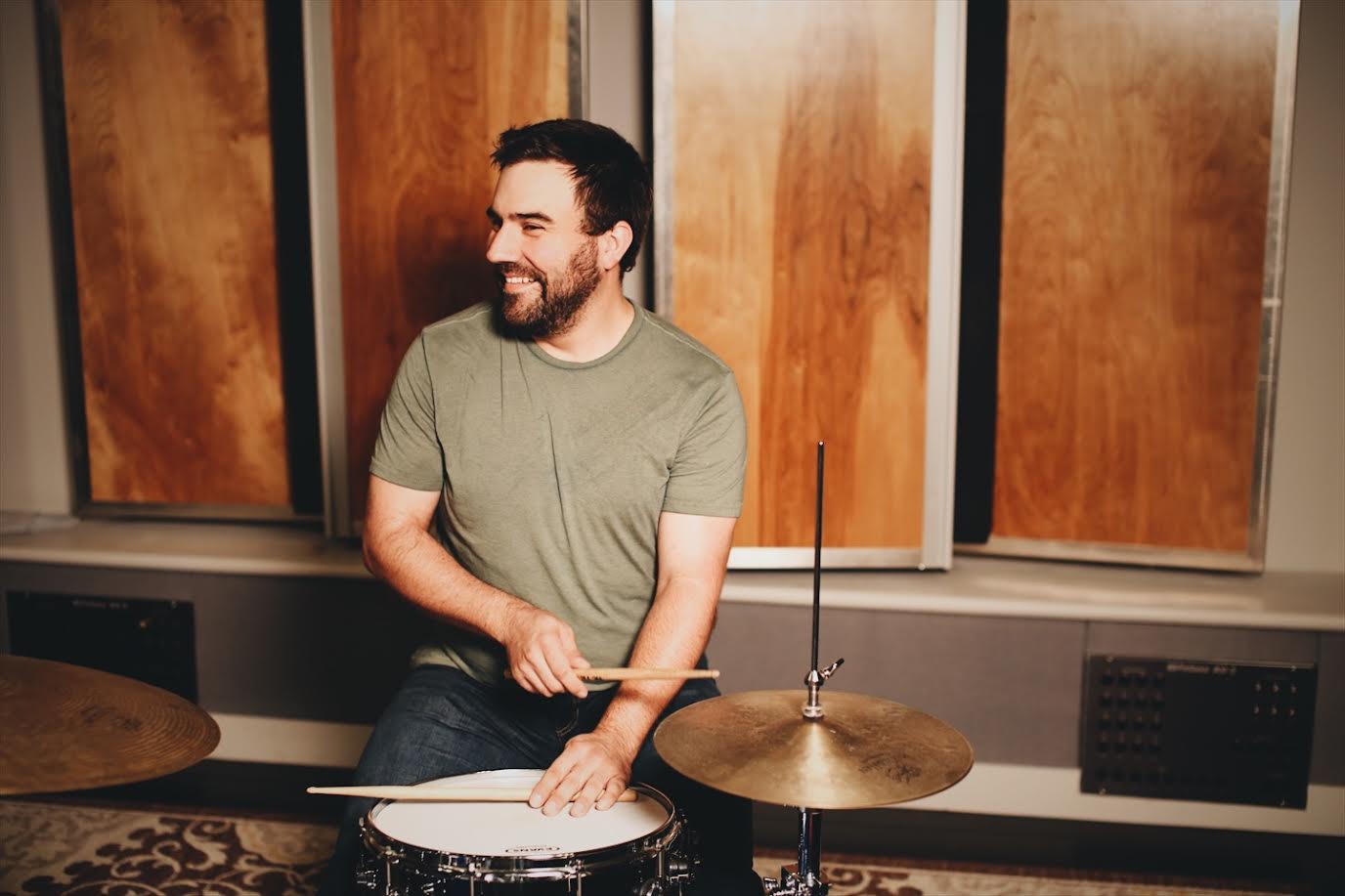
Click here for more info and to purchase Notion!
Butcher Babies and the StudioLive CS18AI and RM32AI at Ozzfest Meets Knotfest in 2016!
 Watch!
Watch!
Jason Klein, bassist of the Butcher Babies, tells us about how the band is using the PreSonus CS18AI & RM32AI systems for both their in-ear monitoring system as well as multi-track recording of their live shows via Capture and Studio One—all happening at Ozzfest Meets Knotfest 2016.
Learn more about the StudioLive Mix Systems here!
Follow Butcher Babies on Facebook!
Follow Butcher Babies on Twitter!
Follow Butcher Babies on Instagram!
It’s Josh Nee for #PreSonusFAMFriday
It’s #PreSonusFAMFriday!
On a scale from one to Beyonce, Josh Nee ranks at about a Solange which, let’s be honest, that’s pretty high up there. Today we sat down with him for a quick get to know you session and interview about his work here at PreSonus and what he loves about his StudioLive AR16 USB.
How long have you worked for PreSonus?
It will be 4 years in October.
What’s your official job title?
What’s your favorite thing about your job?
The people. I love my coworkers, I love our mission here. I’m excited to come to work everyday.
What was the first 8 track, cassette, CD, digital download you purchased?
Everyone has a side job, what’s yours?
I do freelance design (mostly show posters) and play drums in a few bands, I guess mostly notably Thou.
What do you love about The StudioLive AR16?
Its ease-of-use and durability. We use it to demo new songs out at practice each week (literally one click in Capture), and then pack it up and bring it to the gig. A 16-channel mixer that doubles as a USB interface is one of the most practically brilliant pieces of equipment I’ve ever owned.
What other products do you have?
A Studio 192 and a pair of Eris E66, which I have set up in my incredibly modest home “studio.”
Why did you choose this?
One time in high school our band department sent kids to work a concession stand at an LSU football game. I made nachos. I don’t know if we made any money but we were in high spirits and it felt successful.
What are you currently working on?
Being more punctual, making more time for reading, and looking at my phone less.
What’s next for you?
I have a recording session Monday with a band called Jetlagger and then leave for tour with Thou on Saturday, and I’ll be gone about 4 weeks.
Got some tips?
This is probably old news to most, but the FX-chain presets in Studio One are very cool.
Anything else you want to share?
Keep up with Josh and Thou on tour on his Instagram HERE!
Hay Bale Studio Relies on StudioLive 32 and Studio One at Bonnaroo
Most of time, you can find Elijah “Lij” Shaw at his Toy Box Studios in Nashville,
where the Grammy Award winner engineers and produces projects in a wide variety of musical genres. But every year, when the Bonnaroo Music and Arts Festival rolls around, Shaw and his team decamp for Manchester, home of the festival. There, behind the main stage, they soundproof their double-wide mobile recording trailer with 500 hay bales.
In this once-a-year Hay Bale Studio at Brigadoon—er, Bonnaroo—Shaw and his team record dozens of bands that will appear at the festival. The performances are fed to more than 40 radio markets around the USA.
For the 2017 Bonnaroo, Hay Bale Studio offered more capabilities than ever before, as Shaw mixed on the new PreSonus StudioLive 32 Series III digital console/recorder, while his team captured the tracks and main mix in PreSonus’ popular Studio One 3 Professional DAW.
“The StudioLive 32 allowed us to bring in all 24 inputs from the recording floor, so we could record a full band. We’re recording in multitrack to Studio One using the console’s AVB audio interface, which can send and return up to 55 streams over one CAT5 Ethernet cable,” says Shaw.
Shaw mixes live while the band is performing, a job made much easier by the StudioLive 32 Fat Channel signal-processing section’s customizable user interface. “I’ve got compressors and EQ on every channel,” Shaw specifies, “and the customizable Fat Channel lets me create my own layout so I can quickly access the processing I want when mixing. I can bring in four onboard effects processors for reverb and delay, and I also patch in my outboard spring reverb. I use Tap Tempo on the mixer to ensure the timing of the delay effects works with what the band is playing.”
PreSonus’ FlexMix feature also has proven useful. “I choose a FlexMix, and the entire mixer configuration changes and shows me what’s going on with that FlexMix,” instructs Shaw. Using the StudioLive 32’s aux sends, Shaw and team send four custom headphone cue mixes. “We send the cue mixes to the PreSonus HP4, which is a great, simple 4-channel headphone box that is really loud,” he avers. “We have two people with iPads running UC Surface software to control the monitor mixes.”
Main engineer Michael Hardesty also is equipped with UC Surface but he’s running it on a laptop. “Anything Lij can do on the mixer, I can do just as well in the software. My main goal is to set preamps and compressors and do the gain staging so I can get the multitrack feeds recorded properly in Studio One. I am also taking a print of the mix but generally I’m working with individual tracks. I also help with headphone mixes,” Hardesty observes.
With UC Surface, it’s possible to control the mixer from multiple devices at the same time. “That means you can give people different responsibilities,” Hardesty explains. “You also can lock out functions on particular devices; the iPad guys on the recording floor can only control the aux sends for the headphone mixes, while my laptop has complete control of the StudioLive 32.”
The live stereo mix goes straight to mastering engineer Joe Hutchinson. “Joe makes the radio mix sound fantastic,” enthuses Shaw. “He also uses Studio One to capture the performance in stereo. So we’re capturing bands through the StudioLive 32, mixing and mastering, and putting it out to more than 40 radio markets—all within an hour of each performance, with two or three songs for each band every hour.”

Thanks to the feature-packed, versatile StudioLive 32 and the power and speed of Studio One, Hay Bale Studio had entirely new capabilities at the 2017 Bonnaroo. “The customizable mixing surface, plenty of processing, wireless remote control, recording features, and ease of use let us do things we could never do at a dozen previous Bonnaroos,” confirms Shaw, “and it all sounded great. “We loved using the StudioLive 32, and we’re very happy with Studio One. Bonnaroo is a highlight of our year, and PreSonus helped make it extra special this year. We hope you’ll visit our site and check out some of the recordings!”
Watch Lij demo and show off their StudioLive 32 here:
For more information about Hay Bale Studio, please visit www.thetoyboxstudio.com/haybalestudio
Listen to their latest podcast from Bonnaroo HERE!
For more information about PreSonus, the StudioLive 32 console/recorder, Studio One 3 DAW, and the HD4 headphone amplifier, please visit www.presonus.com.
Photography provided by Anthony Matula with MA2LA Design.
Introducing Adam Brandon for #PreSonusFAMFriday
Fridays are awesome…
It’s the start of the weekend and everyone is in a good mood. Every other Friday is a payday, so there’s money in the bank… and it’s #PreSonusFAMFriday where we introduce you to an employee who’s also a PreSonus fan and user. Catch up on who you’ve missed so far on Instagram and check out today’s featured employee, Adam Brandon! He has two first names and loves audio stuff like his StudioLive RML32AI! Check out his quick interview below!
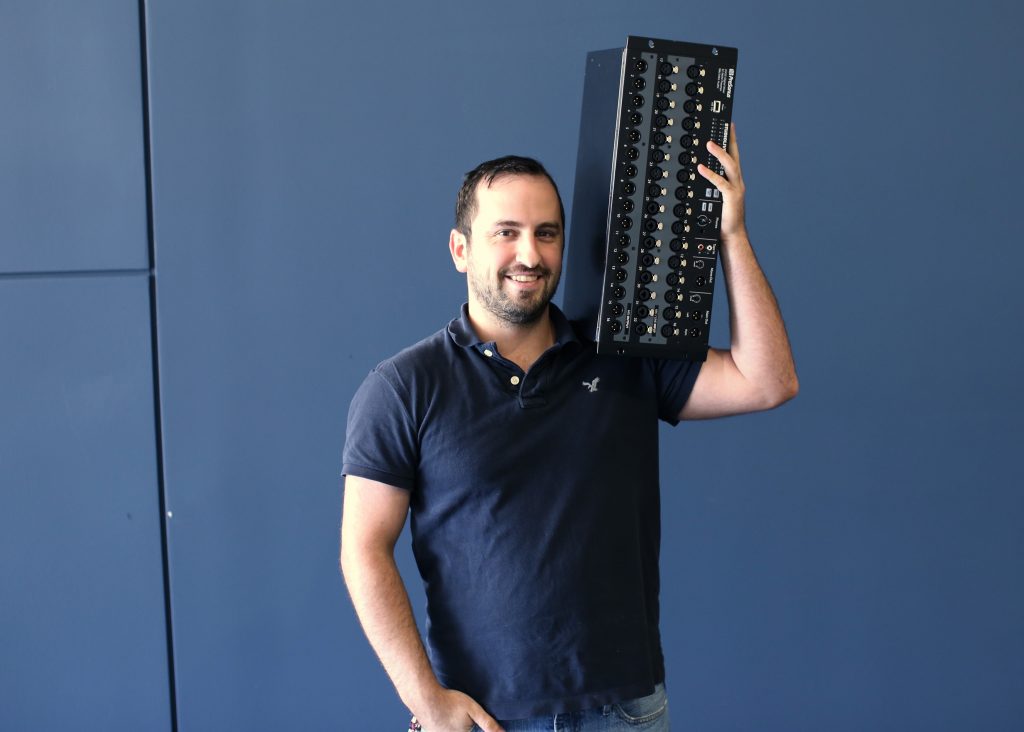
- How long have you worked for PreSonus?
I’ve worked 6 years in July.
- What’s your official job title?
- What’s your favorite thing about your job?
There is nothing better than helping someone get a system up and running and learning that we both are addicted to the same things – mixing audio and making music.
- What was the first 8 track, cassette, CD, digital download you purchased?
Metallica “Reloaded” (CD)
- Everyone has a side job, what’s yours?
I own a sound/lighting company and do live sound, design/installation, and optimizations.
- What do you love about the StudioLive RML?
It fits so well in so many situations, that all I do is get a router, a Firewire cable and my Mac/iPad. Couldn’t be easier.
- What other products do you have?
I have a StudioLive Series III 32 and 16 in my live sound inventory and love them.
- Tell us about a successful event you worked.
- What are you currently working on?
- What’s next for you?
Planning to expand my business and continue to serve our PreSonus Customers as best I can.
- Got some tips you wanna share?
Time to Get Reel—Softube Tape for Studio One now Available
 Time to get reel! Tape is now available at shop.presonus.com
Time to get reel! Tape is now available at shop.presonus.com
Softube’s Tape plug-in adds cohesion and weight to your mixes. But Tape goes far beyond your average tape machine emulation. It includes three distinctly different tape machine types, and it offers the ease of use and low CPU strain that today’s music creators rightfully expect.
Even in this day and age, it’s common practice for computer-based professional studios to run their mixes through at least one generation of analog tape. Why? Because even when used subtly, analog tape has a smoothing effect and adds cohesion and weight to a mix—it takes the recording from a collection of individual tracks into a song where everything is connected and works together. With Softube’s Tape plug-in, you can have all that and more.
Three Machines in One
Tape includes three different tape machine types in one plug-in. Type A is based on a classic Swiss high-end reel-to-reel machine, known and loved for its precision and linearity. Type B is much more colorful—it’s a transformer based machine which adds extra weight and cream to the low end. Lastly, Type C is based on a British tape machine with a distinct vintage vibe.
Ease of Use
Select your favorite tape machine Type, and adjust the Amount knob to taste. In most cases, that’s all you need to do to soak your tracks in analog tape sweetness. Easier still, load up one of the included presets, made by award winning engineers such as Joe Chiccarelli (Beck, U2, Strokes) and Howard Willing (Smashing Pumpkins, Sheryl Crow, Kris Kristofferson).
But Wait, There’s More
Feeling tweaky? Why not start by trying the different tape speed settings—you’ll find that the slower the tape speed, the more pronounced is the so-called tape head bump, which adds low end to the mix. Or open the Remote Control panel where you can control the selected tape machine’s speed stability, crosstalk amount and several other tape-a-licious features.
Dense Sound, Light on CPU
Add a single instance of Tape on your master bus to emulate what most computer based studios do today—mix in the computer, then mix down to a stereo tape machine—or go vintage style by adding Tape to every single track in your mix. Yes, your computer will be able to handle it. As most Softube plug-ins, Tape is uniquely light on your computer’s processor.
Extras for Studio One Users
If you run PreSonus Studio One, you can not only use Tape as a standard plug-in—Adding Tape to your MixFX slot gives you Tape Multitrack. Tape Multitrack includes all the goodies of Tape, but in addition, you get selectable crosstalk between each individual track—and you can easily control the Tape Multitrack settings from a single interface. The Tape and Tape Multitrack license is one and the same. This means that if you’re not a Studio One user but at some future point decide to switch to it, you will already have Tape Multitrack installed, licensed and ready to go.
In Short
- Realistic analog tape sound
- Three tape machine types included
- Easy to use
- Low CPU usage
- Includes Tape Multitrack which can be used in the MixFX slot of Presonus Studio One—adding individual channel crosstalk and single interface control of all tracks
Click here to get Tape from shop.presonus.com!
Notion iOS Update (2.0.183) Available NOW!
Notion iOS Update (2.0.183), June 2017.
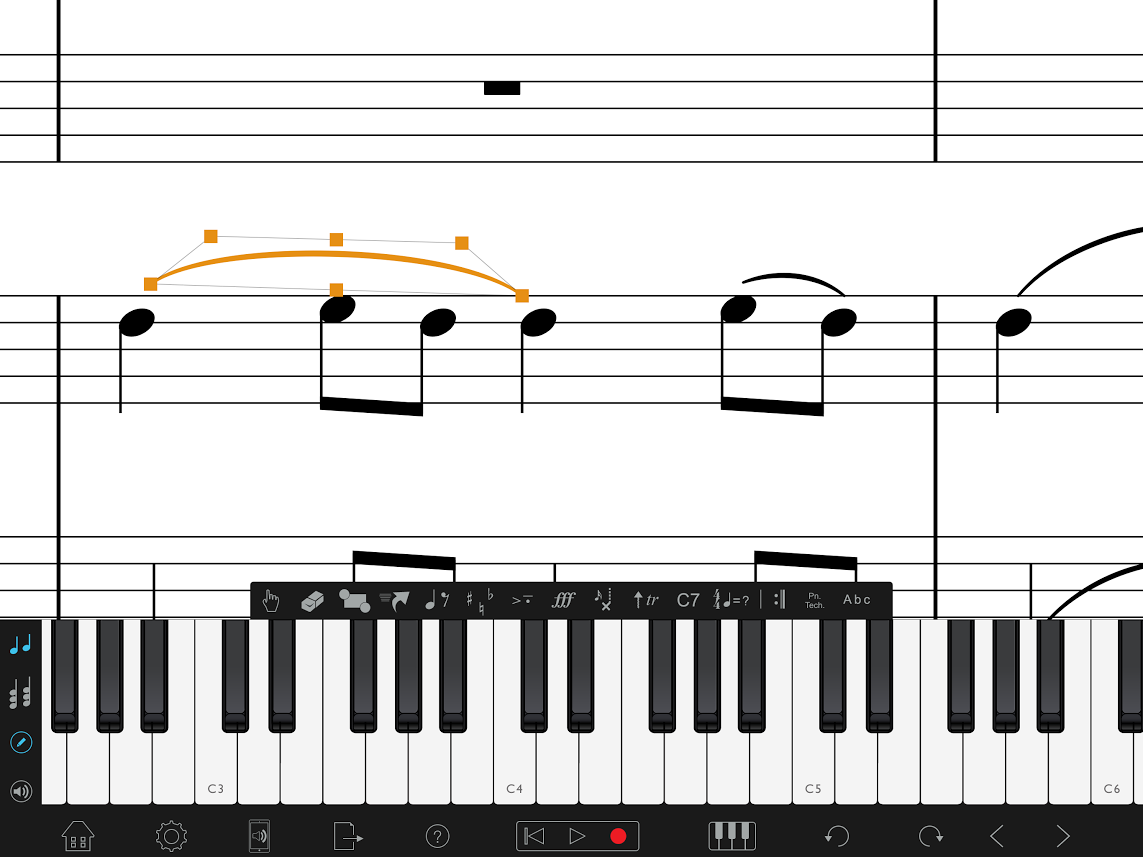 What’s New:
What’s New:
- Slur control points – now when a slur is selected, you can drag its control points to adjust the start and end points, its placement, and even the curve itself.
Fixes:
- Fix not being able to import files from email or other apps
- Fix issue introduced by iOS10.3 that meant the cursor would occasionally jump on note entry
- Fix an issue that was occasionally resulting in notes not sounding during note entry until pressing play
- Update remaining old font selection dialogs
- Fix not being able to edit score text on double tap
- Fix occasional crash when selecting/resizing text boxes
- Fix not being able to drag text boxes
To get this free update, go to ‘Updates’ in the App Store on your device and look for Notion.
Nikola Jeremic on Composing for Starpoint Gemini Warlords in Studio One
[Nikola Jeremic is a longtime PreSonus user, fan, and all-around good friend to the company. He’s written outstanding blog pieces for us in the past, and this is no exception! Today he sheds some light on the oft-misunderstood process of music and audio for computer games, in particular, the just-released science fiction epic “Starpoint Gemini Warlords.”]
How is doing music for games different than doing music for film or TV? What features in Studio One make it particularly well-suited for this application? 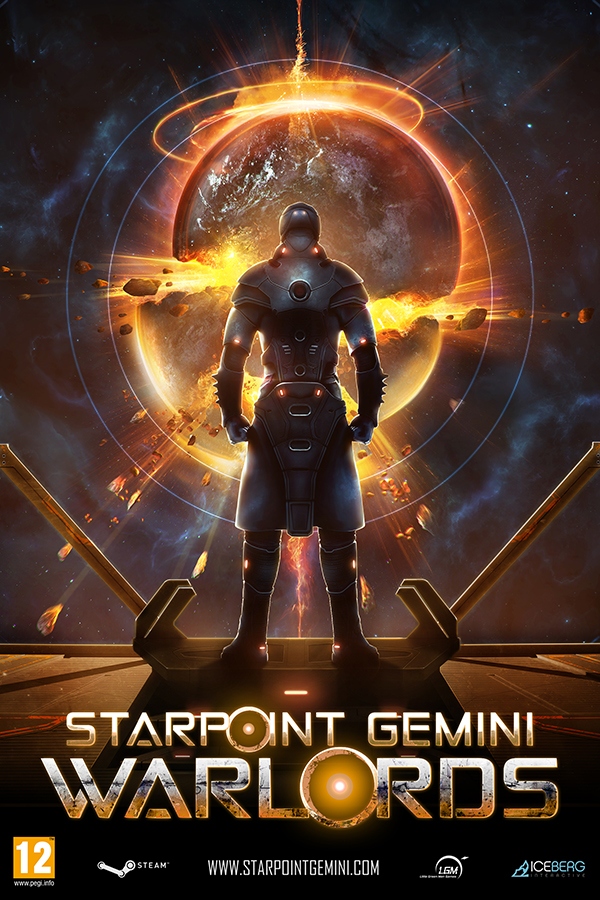
Doing music for games is technically a completely different process than composing for film or TV, because the music in video games is non-linear and interactive, unlike on films and TV. When you compose a cue for film or TV series, you are limited to the timeline of that particular scene, and you have to sync everything to fit in that particular timeline. In the game, the music needs to follow the decisions of the player and fit itself to the various situations the players will get into. That is why I compose a cue for a game in segments. In other words, I create a piece of music that can be divided into looped 8-16 bars parts that can be interchanged inside the audio middleware and each cue has a short ending stinger that can be triggered at any point to end the music cue. This idea is best applied to big action sequences and boss fights. When it comes to ambient atmospheric music, it’s fairly similar, but sometimes it’s not needed to be looped, and you can just transition from one ambient track to another, because I usually compose them in the same key, or I at least make them start and end on the same note for easier transition. That’s the approach I used for Starpoint Gemini Warlords for example.
You’ve been using Studio One for a long time. What are some of the more recent features that you found yourself using during the scoring of Starpoint Gemini Warlords?
Scratch Pads are hands down THE BEST idea ever! I love having the option of being free to experiment and change the arrangement of a cue in a single project that’s opened. It is very useful when I want to create different versions of one track to test how it sounds in different variations. I also love the fact that no matter how many scratch pads you have opened, everything is mixed in the same mix window, so I can bounce different versions very easily and quickly send them off to the developer for listening. I have to say that Studio One Mixer is absolutely the finest and probably the most respected mixing engine out there today. I have a lot of DAWs that I use for composing when collaborating with other people on projects, but I ALWAYS mix my tracks in Studio One. Project page is also awesome, especially when I need to deliver a big amount of mastered tracks to a client and I need to make sure they all sound the same and have the same levels. It’s just amazing, and the fact that I can quickly take care of meta-tags and add album art cover is really cool. The official soundtrack for Starpoint Gemini Warlords is being prepared in Project page, and it makes my life a whole lot easier. I also love the fact that it has all the needed metering in a single window, so I don’t have to load other plugins and use up my CPU. Bouncing in place and converting tracks in project pool is also a feature I use a lot. Creating FX chains with various plugins has made my mixing and sound designing process lightspeed faster, because I can always recall a preset I have created and use it over and over again no matter what plugins I have in the chain. Mojito is still my favorite go-to synth for bass lines. I generally love the sleek and clean look of Studio One interface and its plugins, because it makes my job a lost faster and easier to do without the need to think about “ooh what does this button do?” or spend a lot of time in sub-menus to find the option I need.
Do you use the Notion integration?
Yes I do. Not always, but I most of the time when I am working on piano and orchestral pieces, I always check my score sheet with Notion. What I’d love to see in the future is having Notion editor as an actual part of Studio One Pro. For example, when you open up a midi editor, you can also switch to Notion editor in the same window and tweak the notes on the staff.
Does your score consist of recordings of live instruments or are you using virtual instruments exclusively? If so, which ones?
The score for Starpoint Gemini Warlords consists of both virtual and live instruments. All of the guitar and bass parts are recorded via my FireStudio Project interface, and I also recorded my external hardware synths through FireStudio. This is mostly synth-oriented soundtrack that pays the homage to some of our favorite games and sci-fi franchises. My main synths here were my hardware synths Yamaha DX7 and KORG Volca Bass and Volca Keys, and all of them were processed through my guitar pedals, but regarding the software synths, I used Arturia V collection (mostly MiniMoog V, CS-80 V, ARP 2600 V, and Modular V) and U-He Zebra 2. I also used Mojito for basses and Mai Tai for some pad and drone sounds that were later processed via different FX plugins.
As Starpoint Gemini Warlords is clearly a Space Opera of sorts, do you take any inspiration from John Williams’ use of leitmotif in Star Wars? Any other musical influences you’d care to talk about?
What I love about Little Green Men studio (the developers of the game) is that it’s a group of fanboys and fangirls and it was a lot of fun at brainstorming meetings regarding the soundtrack for the game. Everybody was into sci-fi music and everyone has their own favorite franchises, so I had to do a lot of research and take a listen of various sci-fi game and film soundtracks. There were no traditional leitmotifs for characters, instead we decided to represent each sector in the game with a different melodic theme based on what usually goes down there, so for example more friendly sectors have some light evocative music, alien sectors are more mysterious and feature elven type of vocals and exotic woodwind instruments, while pirate and outlaw sectors are very dark and aggressive in sounds. The biggest inspiration came from video game soundtracks such as Homeworld, EvE Online (I’d love to score that one in the future), Mass Effect, Deus Ex The Human Revolution, and Battlestar Galactica TV series.
Any advice to share for musicians and producers who want to get into game audio or music but don’t know where to start? 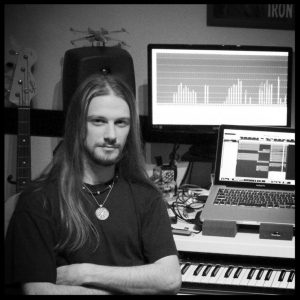
First thing I suggest you do is to join audio societies such as AES (Audio Engineering Society), G.A.N.G. (Game Audio Network Guild), and visit conferences such as GDC (Game Developers Conference) and GamesoundCon. You will meet a lot of people from the industry, and they will all be more than happy to share knowledge and forward you to other people as well. Read books on game audio from publishers like Focal Press for example, I know that helped me a lot. You can always look for some smaller mobile gaming developers out there in your local communities and get in touch with them as well. And the most important thing of all is to learn your craft and learn it good. Don’t get overwhelmed by this or that plugin that’s newest on the market or whatever. Get a set of tools that you like and learn them well inside and out. You will be amazed by how easily you can get great results with bundled plugins that come with your DAW. I still use my Studio One Pro EQ and Compressor most of the time for sampled stuff. Create your own sounds from the stuff that you have. A developer will always learn to appreciate more the fact that you took your sweet time to create something original that’s only for them, than sending them something created with commercial instruments libraries that everyone uses.
Links:
Studio One 3.5 – What’s New and Release Notes
Studio One 3.5 is here! This is a free update for owners of Studio One 3.x. Click “Check for updates” in Studio One’s start page to get it!
Full release notes follow. For a less-technical overview, check out the video below or visit our What’s New page here.
IMPORTANT: This version introduces an updated file format for Songs and Projects for faster
Save / Auto-Save. Files created in 3.5 will no longer open in previous versions of Studio One.
Make sure to work from copies of your existing songs created in Studio One 3.3.4 or older if
you like to continue working with a previous version as well.
______________________________
New features and improvements:
Audio Engine and Performance
Flexible Dropout Protection
• Native Low Latency Monitoring
• Low-latency virtual instrument monitoring
• Multi-processing enhancements for improved CPU balancing
Arrangement and Automation
New shortcut to “Select all Muted Events”
• Copy/Paste Events also copies Layer data
• Import tempo map, time signatures and markers when dragging MIDI file to
Arrangement [Cmd+Alt]
• Maximum Track Delay increased to 1,000ms
• New Track command: “Apply Track Names to Channels”
• “Cursor follows Edit Position” now limited to manually selected events or
ranges
• Batch renaming events always adds leading zero
• Event Inspector: Multi-editing for Event Start and End
• Arranger Track: Move Arranger Section only [Cmd+Alt]
• “Bounce to new Track” now preserves output routing
• Complete Show/Hide for Automation
• Automation Lanes on Instrument Track
• Improved time-stretching accuracy. “Audio Bend” mode now obsolete.
Mixer (Console)
• Mixer Undo
• Remote control of StudioLive Series III Fat Channel and mic pre-amps
• New command: “Remove Track Automation” removes all automation data
• Visual plug-in bypass state in console
Instruments and Plug-ins
Fat Channel XT
• Adjustable level range for Spectrum Meter (all modes)
• Updated micro-views for Spectrum Meter
• 12th octave mode in Spectrum Meter (incl. keyboard scale)
• Loudness Meter now EBU R-128 compliant
• [macOS] MIDI input for AU plug-ins
• Event FX window follows Event selection
• [macOS] Preset list support for AU instruments/plug-ins
• FX Routing: Splitter can now be moved freely
Music Editor
Unlimited number of controller lanes
• Option to “Resize adjacent Events” (multiple overlapping) [Alt]
Score Editing with Notion
• Send audio or note data to existing song
• Tempo map import (drag & drop)
• Other improvements within Notion (ReWire handling, Studio One application
launcher, and more)
Project Page
• Independent Track Markers
• Flexible Loudness Detection options
• New Loudness Meter
• New Spectrum Meter
• DDP import
• Improved meta-data editing
• Pool in Project Page
• New Bounce Track option
• Dynamic search for Songs in Project (improved compatibility)
• Faster rendering (if a Song is used multiple times)
• New command “Bounce Track” (includes Track inserts, not Master FX)
• Extended “Add to Project” menu
• Improved ID-tag export (adding Composer and ISRC)
• User interface improvements
• New “Split Track” and “Split at Cursor” commands + shortcuts
Browser
• New “Construction Kits” node in Loop Browser
• Search fields in Browser and Mixer reset on close
Hardware and Multitouch
• Dual-screen support (Raven MTi)
• Higher MIDI update rate for control surfaces
General
• Delete unsaved files and folders when closing new song w/o saving
• Warnings shown when errors occur while exporting mix in real-time
• Updated FLAC codec (better performance)
• Improved save and auto-save performance for Songs and Projects
• [macOS] Independent recording and playback devices
• Extended Bounce and Export options
• Support for 176.4 kHz sample rate in audio export
• [Developers] Gain Reduction API for VST2
—————————————————————————–
—————————————————————————–
The following issues have been fixed:
• “Invert Selection” didn’t restrict range when Scratch Pads exist
• Arranger Track section copy doesn’t work backwards on timeline
• Pre-recorded notes overlapping loop start are doubled after loop recording
• Fade handles are hard to reach when event volume is not at max.
• Overlapping audio events with fade-in are out of sync
• Crash when recording MIDI in loop
• Play Start Marker affects bounce between markers
• No “Paste” in context menu for Tempo Track
• [ARA] Events show wrong content when split after analysis with Melodyne 4.1
• Crash with NI Komplete Audio 6 when changing sample rate
• Audio time-stretch with bend markers is not exact
• Chorder: Crash when transposing out of range with automation
• Install from “Cloud” inside Studio One 3.3 hangs
• Plug-in menu search box loses focus
• Command for “Show in Finder/Explorer” not working for Macros
• Can’t drag more than one Instrument from Browser
• [macOS] Newly created folders not visible in Browser
• “Copy external files” not working for multiple opened songs
• [macOS] Studio One language changes after re-install
• Crash while closing all songs
• Musicloop exports without audio when routed to outputs other than Main
• Wrong-placed note events in loop recording
• Sustain pedal with latency writes wrong data
• Global plug-in bypass not functional if any plug-in in Chain is disabled
• Spectrum Meter curve has offset depending on FFT size
• Channel buttons missing on Multi-Instrument channels
• [macOS] AU Instruments saved in OFF status load back empty
• [macOS] Kontakt AU not showing all available outputs
• Global deactivate FX not working with disabled tracks
• Inconsistent behavior when chasing long notes
• [Impact] Wrong channel order when moving sub outs in mixer
• Wrong channel order after transform to audio and back
• Wrong channel order between folders and busses
• Wrong channel order when dragging instrument to track
• Studio One will not export note data to Notion if the file has an apostrophe in the name
• [macOS] Crash on start with OSX 10.11 El Capitan
• [macOS] AU presets always marked as edited
• |macOS] Invisible scroll bars in help window
• Offset when dragging audio file with bend-markers to Instrument Track
• Notes are transposed one octave when dragging to new Instrument Track via
Melodyne
